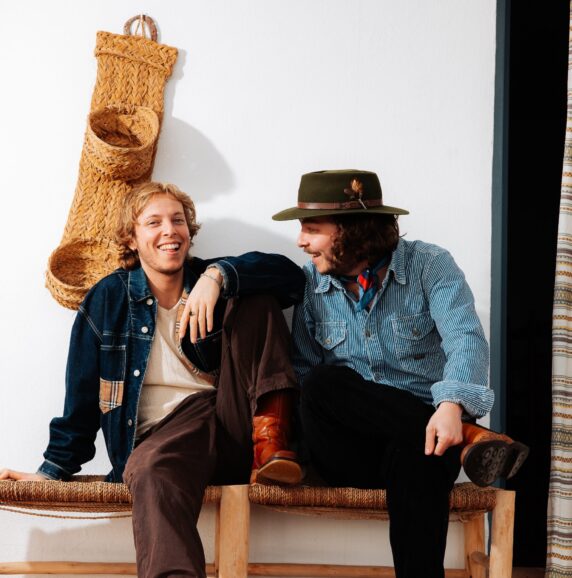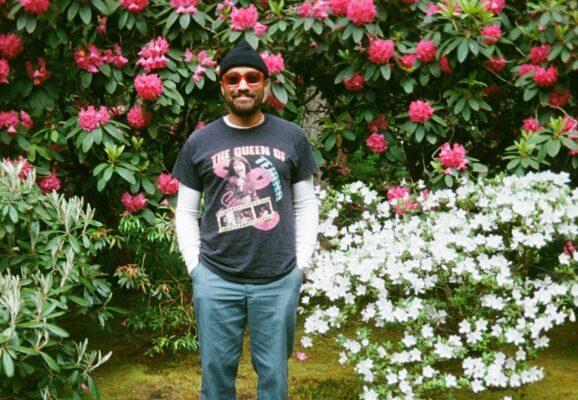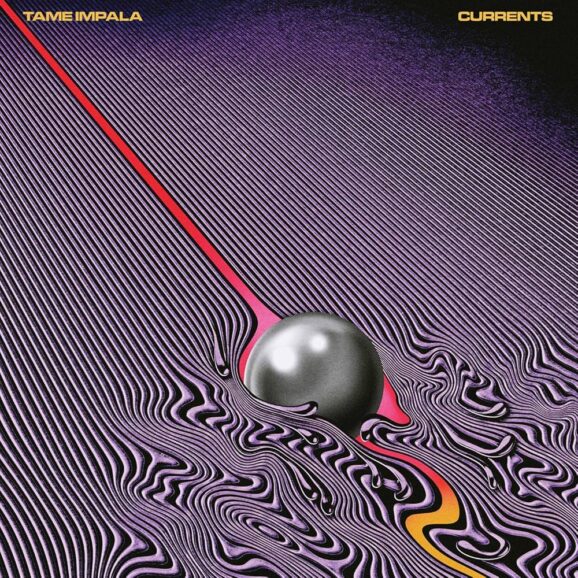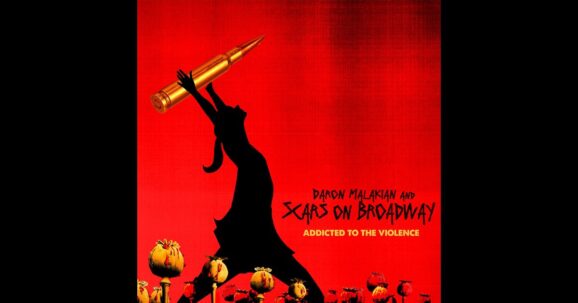 Today, Deutsche Grammophon releases Sin Palabras (Without Words), the instrumental companion to Tori Amos’ brilliant record Night of Hunters, which came out earlier this year to much critical and commercial success. While the lyrics and vocals have been stripped away and the instrumental section remastered by Jon Astley, the narrative of the work remains fairly present throughout. This is very much a result of the superlative work done by John Philip Shenale in composing all of the orchestral arrangements for the record.
Today, Deutsche Grammophon releases Sin Palabras (Without Words), the instrumental companion to Tori Amos’ brilliant record Night of Hunters, which came out earlier this year to much critical and commercial success. While the lyrics and vocals have been stripped away and the instrumental section remastered by Jon Astley, the narrative of the work remains fairly present throughout. This is very much a result of the superlative work done by John Philip Shenale in composing all of the orchestral arrangements for the record.
Having worked with Amos since her debut in 1992 with Little Earthquakes, Shenale has been a constant force in bringing certain songs in Amos’ repertoire to new levels with the thoughtful and judicious addition of string sections. Never has there been a more fully-formed and masterful fruition of his talents vis-a-vis Amos’ aesthetic, however, than on Night of Hunters. Harnessing the acoustic power of an octet (with the occasional appearance of contra-bassoon) to supplement Amos’ visceral Bösendorfer piano provides the songs with aural intensity, and by rooting each piece in classical texts while allowing Shenale the opportunity to flirt with modern 20th Century musical motifs fleshes out Hunters‘ arc into a riveting, and somewhat alchemical, fusion of myth and present day, dream logic and reality.
With Sin Palabras, listeners can dig deep into the compositions on each of Hunters’ fourteen tracks, and while there’s no vocal to ostensibly anchor the pieces, Amos’ inimitable piano maintains the stylistic thread. But what’s fascinating is the unencumbered experience of leaping into Shenale’s orchestrations. This instrumental companion actually opens the Night of Hunters project up to so many new worlds and gives an entirely new entry point and life force to the work. So while much esteem should be paid to Amos for conjuring up and executing what remains as one of her most vital musical contributions to date, similar praise must also go to John Philip Shenale. His deft hand at bringing Amos’ vision to life through orchestral accompaniment is one of the key reasons why Hunters is such a success, and his involvement on this album exhibits some of his most daring and absorbing work to date.
Glide Magazine had the chance to talk at length with Shenale about the writing and recording of Night of Hunters, as well as discuss Amos’ 2011 world tour in support of the record, for which Shenale re-arranged and re-interpreted a large number of songs from her catalogue for the show. In Part I of our conversation, we examine the Night of Hunters creation process. Later this week, Part II will focus on Shenale’s work on the Night of Hunters tour and his background with Amos and their history of working together, including the serendipitous point where he took the helm as her orchestral counterpart.
You’ve worked with Tori for some time now. When she decided to do this project for Deutsche Grammophon, were you immediately contacted about participating? If not, at what point did the project require your assistance in doing the orchestrations for the octet?
It was certainly early on, I believe. In the middle of 2010, I was digging into the arrangements for the show in October with the Metropole Orkest in Amsterdam, and I got a call in the early morning from Tori about the possibility of doing the record for Deutsche Grammophon. From that point on, it was a constant stream of thought that we had going on, wondering what the size would be– the shape, the narrative, etc. We were throwing ideas around about sound and concept for months ahead of everything. Earlier this year, though, Tori started giving me her completed songs, and I worked from that on my arrangements.
A major contributor in this process between me and Tori was Dr Alexander Buhr, chief musicologist for Deutsche Grammophon. He made substantial contributions to Tori’s research of classical source material. I also studied works that I thought had connection with what we were doing, even tangentially: Brahms sextets and quartets, Hindemith Stravinsky and Spohr octets, Shostakovich’s 3rd 4th and 7th quartets, Darius Milhaud’s la Creation du Monde, the sextet version of Verklerte Nacht by Schoenberg, etc.
How did you select the octet used on Night of Hunters?
As Tori and I began forming a concept of what would be the instrumentation for Night of Hunters, we knew early on that it would be an intensely intimate sound. A quartet of strings would be essential and an equivalent woodwind family was necessary to convey the maximum emotion and color but still retain the chamber quality. But it was really Alex [Buhr] who was instrumental in the selection of all the players on the album. They are all such superb musicians.
Each song is rooted in a specific classical text, whether from Schubert, Granados, Satie, etc. How familiar were you with these pieces beforehand? What was your research process like to dig into these works?
I didn’t refer to or refresh my memory of the source material, because I knew I needed to approach each song as "Tori’s composition," putting the original presentation from each composer out of my mind. This was definitely made easier because Tori’s deconstruction and narrative were both so strong, which then compelled my arrangements to be driven exclusively by Tori’s re-construction and text.
The Alkan piece (Prelude Op. 31, No. 8 "The Song of the Madwoman on the Shore”) was new to me. I have been in love with Schubert’s lieder since college, though. I remember hearing a live performance of Der Erlkönig, which brought me to tears.
When you’re given a piece of music that is piano and voice, is there an instrument you go to first (when working with an octet or more) to form the foundation of your orchestration?
It really does depend on the type of arrangement. For example, for “Nautical Twilight” I used the violin and viola as my starting seeds, because of the nature of their dialogue with Tori’s melody and the text of early evening creatures darting in and out around her. For “Shattering Sea,” I went with bassoon and oboe first, because the attack of the double reeds and their dexterity were vital for that opening. I often have gone to the cello and viola for power and pathos in many of my rock arrangements over the last decade, but I’ve been using the violin as the start of many arrangements recently.
What songs were particularly challenging on Night of Hunters? How did you work through the difficulties?
I would say all were equally intense for various reasons, the size of the group was really 10 pieces when you include Tori’s melody/lyric and Bösendorfer piano, and eleven with the contra bassoon. The narrative must kept in mind at all times, too, as it existed as its own instrument in my mind. I would consider questions like, “Is the octet harmonious with Tori? Should it feel neutral or antagonistic? Does the arrangement provide a history or subtext? Is it tightly tied to Tori’s voice or dances around like a fairy or sprite?,” and so on.
In “Shattering Sea,” for example, there’s a major dichotomy between calm and storm in Tori’s performance, between the aggression of the piano and then the relative composure of the vocal, so that had to be reflected and enhanced. The octet has to always be propelling the piece and narrative forward, so I fragmented some of Tori’s piano melodies and their extensions in the storm sections across the octet and separated the dissonances across octaves. With “Fearlessness,” it was vital to enhance the rolling rhythm of Tori’s piano without interfering, but still bolstering the sound and breadth. With “Star Whisperer,” which involves a major instrumental break, it was just so epic and multi-faceted that I could really work through a wide range of colors through different solos and manipulating the power dynamics.
"Star Whisperer" contains the longest instrumental break in the album– well over three minutes. What was your approach in that song, to maintain focus but also to fit in with the "Other Side of the Mountain" theme and the Schubert piece?
I thought that her choice to put “Other Side of the Mountain” into “Star Whisperer” was perfect. That was quite an involved arrangement, with three different integrated sections: the intro and end largo sections, the “Other Side of the mountain” and then the soli and tutti instrumental in the middle. With that song, we had to bring life and myth and roll them together into one complete entity. Tori had subdivided the instrumental into various motifs, and so we were able to play off of that mapping, but yeah– it was definitely a long and involved process!
"Battle of Trees" sounds like it uses a prepared piano, with pizzicato strings and a really restrained opening, blossoming into richer orchestrations. Since that song is an epic poem of sorts, how did you approach your orchestration?
In “Battle of Trees,” maintaining whimsy was a main focus for me. I used mutes on the strings in the beginning to create the ambiance of a deep exotic woods, which matched Tori’s prepared piano. To get her piano to sound like that, I used rubber wedges on the first harmonic of the piano strings. Then, the muted pizzicato strings of the quartet enter as a mirroring of the sound of the prepared piano. “Battle of Trees,” actually, is a good example of the need for both woodwinds and strings in this project. Every section brings a new emotion into the piece, which is based on similar melodies and their development, like a growing and evolving tapestry. The two different sounds between woods and strings were used singularly and then combined to make for evocative textures.
“Seven Sisters,” which is the first completely instrumental piece to show up on a proper studio record in Tori’s discography. The source text for the song is Bach’s “Prelude in C Minor,” but I’m getting a really distinctive Philip Glass impression from the construction. Am I crazy for hearing that?
(laughs) I’m sorry for cracking up, but it just always amazes me how insightful people are. That’s great, and yeah you’re absolutely right. It wasn’t Philip Glass specifically, but it definitely was the Minimalist school that is there in the piece.
The thing about Tori’s playing is that she’s got this beautiful figure going on, and I wanted to preserve that. I wanted it to be a dance, and not exactly two solos playing at the same time, where you’re just showing off. The whole Minimalist palette allows the clarinet to hide and then display itself throughout. And then there’s this fragmentary concept in which there’s these pieces that show up and break and then come into full melody, but it’s grounded in a modal framework, so you get a motion that creates dynamics rather than dynamics creating dynamics. It comes through the rhythm and these percussive moments of instruments appearing and disappearing. Also, Tori really wanted there to be an appearance by a “male force,” and I thought the dance effect between the “female” piano protagonist and the male clarinet worked well in that Minimalist structure.
I think the word “dance” is probably the most succinct way to discuss the song. It really comes down to the magical interplay between the clarinet and piano.
I loved it. And I have to say that Andreas was just ridiculous. He was phenomenal.
I don’t want to necessarily say that “Seven Sisters” breaks narrative with the rest of Night of Hunters, but I find this nod to Minimalism, which in my mind is not necessarily the focus of composers like Mendelssohn, for example, opens up the record to these more modern classical times, so it, in a way, thrusts the piece into this modern sphere without betraying its history.
I can hear what you’re saying, but using modal and scalar was definitely in the 19th Century practice, but is definitely Minimalist in practice, yes. I bet you can find work that is similar in setup in a 19th Century common practice, so I don’t find it that much of a jump. I think what’s interesting is that you’re reading from a Philip Glass/Minimalist brain looking back into it, but I still think the piece fits within the context of the record. There are extensions into the 20th Century in the rest of the album, although everything is definitely mixed in. With “Seven Sisters,” though, it really becomes apparent.
Another example of the dance effect, though, can be found in “Nautical Twilight.” It’s technically a similarly fragmented melody that expands out to create the dynamics and movement. Throughout the song, you have the viola in every introduction of the verse playing these fragments, where the viola is dancing around Tori’s melody, coming in and out. So, in a way that can absolutely be considered Minimalist as approach and execution, even though that piece comes across as grounded in that classical sound.
But if we look at Postmodernism, for example, where it’s this concept of history as just iterations of itself repeated throughout and not necessarily constant innovation– especially if we’re looking at music or the visual arts– don’t you feel there’s a level at which we’re essentially still making music that still draws from the constructions of the Mendelssohns, Schuberts and the like that are used as sources in Night of Hunters.
OK, yeah, I actually really agree with that. It’s interesting to bring up Postmodernism, because all of these composers that Tori used were ones that did leaps forward in their craft, where they drew from musical history but propelled their worlds, both technically and aesthetically, way beyond where they found them.
When I first met Tori and began working with her, I entered into our relationship hearing her come at music, and her stamp on music, from a definitely, I guess we can say in this discussion Postmodernist way of approaching music. That side of her playing that comes just as natural and strong as her “Rock” self as well, to me.
I think back to songs like “Yes, Anastasia,” which really seem to me to be Impressionist-minded and informed. And if you look at the history of visual art and its intersection with music, there’s a major school of those who use synesthesia to blend together colors, words and melodies, which inform each other. That really comes through in spades on Night of Hunters.
I really think so. First of all, the process of making the record was incredibly intense. And I’m like that too– I “see” music and light, art and cinema when I’m working and making the arrangements. I say to myself that it was an intense process, however, every time I work with Tori’s albums, but this one was bringing out some very serious metaphysical events.
There’s so much flexing of everyone’s expertise on this record. It’s as if Night of Hunters plays to everyone’s strengths who was involved.
I can’t speak for Tori, and in no way could I, but I get the feeling from our conversations and just being in the room, that this was a hugely important and intense process for her, on so many levels. And it’s always a demanding undertaking, because she does create certain characters or concepts for so much of her work, and that takes focus and readiness, but with Night of Hunters, it’s a full-on, unending work that never relents from its character world. And then taken with the metaphysical nature of the songs, it ends up being a lot of responsibility for the care and feeding of these creatures– and she has to feed them from herself and her own spirit. So, I know that it was a very heavy experience for her, but also for both of us.
John Philip Shenale has contributed his talents as a composer, arranger, musician and/or producer to over forty Gold and Platinum albums, both domestic and international, and over thirty Top-40 singles. His work has been associated with 21 Grammy nominations and includes albums by Tori Amos, Jane’s Addiction, Janet Jackson, Tracy Chapman, Diana Ross and Billy Idol. For more information, please visit his official website.












